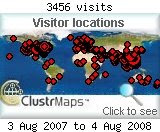DoH gets P250M grant to reduce maternal death
By Anna Valmero
INQUIRER.net
First Posted 20:17:00 09/18/2009
MANILA, Philippines—Of the 100,000 mothers giving live birth in the country, 162 die for lack of attending medical professionals and obstetric care, making the country among 68 others where 97 percent of global maternal and child death occur, health officials said on Friday.
Health Secretary Francisco Duque III said that although the country's 162 maternal mortality ratio (MMR) dropped from a 1993 baseline of 209 based on the 2006 Family Planning Survey, the challenge remains in terms of reducing MMR by 75 percent or 52 by 2015 based on the Millennium Development Goals (MDG).
Worldwide, United Nations Population Fund representative (UNFPA) Suneeta Mukherjee said over 500,000 women die each year from pregnancy-related causes, with the lifetime risk of dying from pregnancy in developing countries such as the Philippines standing at 1 in 75 women.
“In the Philippines, 11 women die due to complications of pregnancy at childbirth. With the death of the mother, infants are 10 times more likely to die prematurely. In the country, 93 newborn deaths are recorded daily due to preventable causes,” said Mukherjee.
A baby born in a developing country is over 13 times more likely to die within the first five years than a child born in an industrialized country, she added.
Duque said causes of maternal deaths such as hypertensive disorders, severe hemorrhage, or other labor or abortion-related problems and child death due to infection are preventable by having child deliveries in health facilities, with both mother and baby attended by skilled healthcare professionals.
Responding to these, DoH in partnership with UNFPA, UN Children's Fund, World Health Organization, and Australian Government Overseas Aid Program teamed up on a joint program that aims to reduce the country's maternal and newborn death hinged on giving women greater access to reproductive health care services.
Project to cut maternal deaths
The group will allocate P250 million ($5.56 million) as seed funding for the project, of which P160 million will be come from AusAID, said its minister counselor Titon Mitra.
Duque said the seed funding will be supplemental to the P3 billion fund requested by DoH to the government for addressing maternal and newborn care.
The first phase of the project is the transition period on 2009-2011, which will implement programs to reduce maternal and child deaths during birth in pilot sites such as Eastern Samar, Ifugao, Lanao Del Sur, Maguindanao, North Cotabato and Sarangani provinces; and urban poor areas in Tacloban, General Santos Taguig, Navotas, Paranaque, and Makati, said Duque.
Pilot project sites were selected based on high poverty incidence, high number of teenage pregnancies, high rate of deliveries at home by traditional attendants, and high deaths during childbirth, he added.
Depending on the overall performance during the transition period and availability of resources, activities will be scaled up into full operations on 2011-2016 to meet the MDGs.
Full operations or the second phase which will include other areas with similar criteria, is expected in the period from 2011-2016, the health secretary said.
DoH aims to implement the program in four phases: pre-pregnancy, pregnancy, delivery, and post partum, since the mother is at risk at all stages, said Health Undersecretary Mario Villaverde.
Villaverde said DoH will measure the effectiveness of the program interventions at each stage through the measurement of contraceptive prevalence rate, antenatal visits, delivery in health facilities with skilled healthcare professionals to attend to the mother and newborn, and initiation to breastfeed and tapping healthcare packages to cover deliveries.
He said DoH will relocate the Dr. Jose Fabella Memorial Hospital in Sta. Cruz, Manila to the somewhere at the Lung Center of the Philippines in Quezon City and add among its functions a research arm that will be named “National Research Institute for Maternal and Neonatal Care.”
Unicef representative Vanessa Tobin assessed that the Philippines can achieve its goal of reducing maternal and newborn deaths through the program by having available skilled healthcare workers to take care of mothers during pregnancy stages and by focusing on implementation of the program on priority areas.
“Based on global experience, having skilled health professionals to attend to mothers and babies as well as spacing and family planning, we can reduce by 80 percent the incidences of maternal and newborn deaths so we expect to focus on this,” added Mukherjee.
WHO representative to the country Dr. SoeNyunt-U added more mothers should be educated on the importance of breastfeeding especially after childbirth to take advanatage of nutrients from colostrum or the “first milk” produced by the mother after childbirth.
“Sadly, mothers just take two minutes to breastfeed their newborn child. That is hardly enough for the child to benefit from the antibodies and nutrients from colostrum, which is essential to protect the baby from infections and bacteria. All babies are prone to infection right after childbirth,” said Soe.
Bagong Simula sa Bayan ni Juan
Breaking News
For other news and information, scroll the links found on the sidebar. Links to other relevant sites and media blogs are located on the lower right portion. - RAFS76
Saturday, September 19, 2009
162 out of 100,000 mothers die giving birth
Posted by PhilMADE at 12:18 AM
Subscribe to:
Post Comments (Atom)













0 comments:
Post a Comment